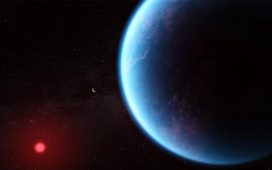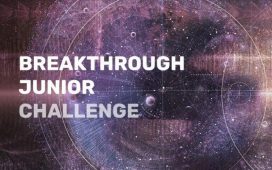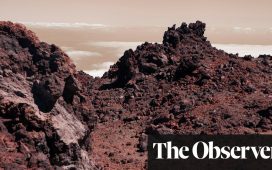A European-built orbital satellite was launched into space on Saturday from Florida on a mission to shed new light on dark energy and dark matter, the mysterious cosmic forces scientists say account for 95% of the known universe.
The Euclid telescope, named for the ancient Greek mathematician known as the “father of geometry”, was carried in the cargo bay of a SpaceX Falcon 9 rocket which blasted off about 11am EDT (1500 GMT) from Cape Canaveral Space Force station. A live stream of the liftoff was shown on Nasa TV.
New insights from the $1.4bn (£1.1bn) European Space Agency (Esa) mission, designed to last at least six years, are expected to transform astrophysics and perhaps our understanding of the nature of gravity.
After a short flight to space, Euclid was to be released from the Falcon for a month-long voyage to its destination in solar orbit nearly 1m miles (1.6m km) from Earth – a position of gravitational stability between Earth and the sun called the Lagrange point two, or L2.
From there, Euclid will explore the evolution of the “dark universe” using a wide-angle telescope to survey galaxies as far away as 10bn light years from Earth across an immense expanse of the sky beyond our own Milky Way galaxy.
The 2-ton spacecraft is also equipped with instruments designed to measure the intensity and spectrums of infrared light from those galaxies in a way that will precisely determine their distances.
The mission focuses on two foundational components of the dark universe. One is dark matter, the invisible but theoretically influential cosmic scaffolding thought to give shape and texture to the cosmos. The other is dark energy, an equally enigmatic force believed to explain why the expansion of the universe has been accelerating.
The possibilities of the mission are reflected by the size of Euclid’s inquiry. Scientists estimate dark energy and dark matter together make up 95% of the cosmos, while ordinary matter that we can see accounts for just 5%.
Euclid was designed and built entirely by Esa, with the US space agency, Nasa, supplying photodetectors for its near-infrared instrument. The Euclid consortium comprises more than 2,000 scientists from 13 European nations, the US, Canada and Japan.

A decade in the making, the mission was originally meant to fly to space by way of a Russian Soyuz rocket. But launch plans were switched to SpaceX, the California-based venture of Elon Musk, after war erupted in Ukraine and because no slot was immediately available from Europe’s Arianne rocket programme.
While the James Webb space telescope, launched by Nasa late last year, allows astronomers to zero in on objects from the early universe with unprecedented clarity, Euclid is intended to expose the hidden fabric and mechanics of the cosmos by meticulously charting an enormous swath of the observable universe in 3D – more than 1bn galaxies in all.
Dark matter and dark energy cannot be detected directly, but their properties “are encoded in the shapes and positions of the galaxies”, said astrophysicist Jason Rhodes, lead scientist for Euclid at Nasa’s Jet Propulsion Laboratory near Los Angeles. “Measuring the shapes and positions of galaxies allows us to infer the properties of dark matter and dark energy,” Rhodes said on Friday.
The data will be collected as Euclid maps the last 10bn years of cosmic history across a third of the sky, gazing outward, and thus back in time, to an era of the universe astronomers call “cosmic noon”, when most stars were forming.
Scientists say that observing subtle but distinct changes in the shapes and positions of galaxies over vast spans of time and space will reveal fine variations in cosmic acceleration, indirectly exposing the forces of dark energy.
Euclid also will help reveal the nature of dark matter by measuring an effect called gravitational lensing, which produces faint distortions in galaxies’ visible shapes and is attributed to the presence of unseen material warping the fabric of space.
Through insights into dark energy and matter, scientists hope to better grasp the formation and distribution of galaxies across the so-called cosmic web of the universe.
Euclid will provide “a goldmine for all fields of astronomy for several decades”, said Yannick Mellier, Euclid consortium lead and astronomer at the Institut d’Astrophysique de Paris.









